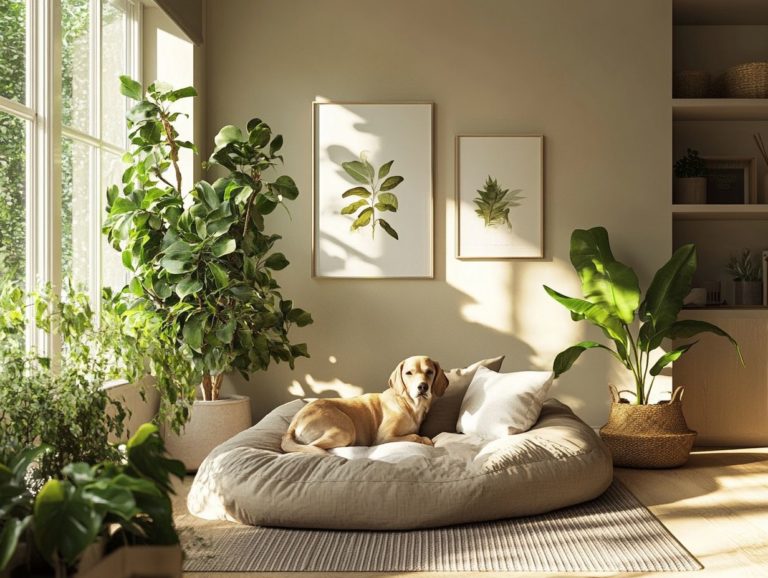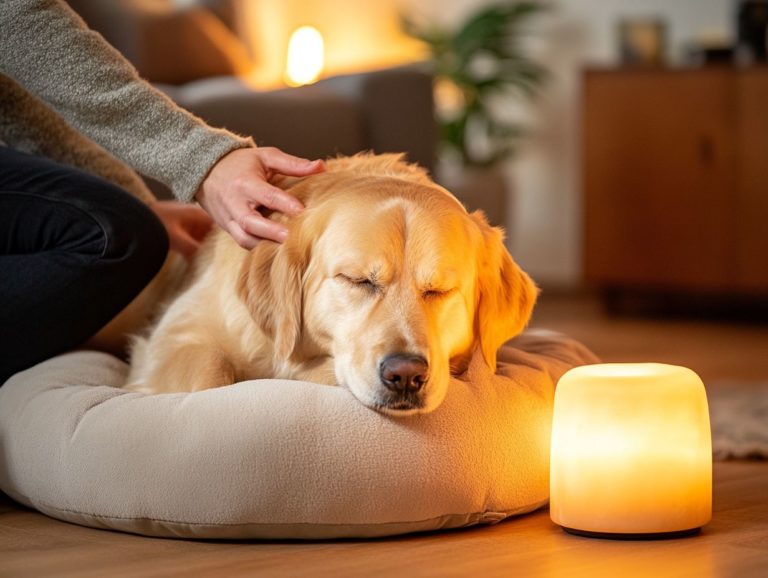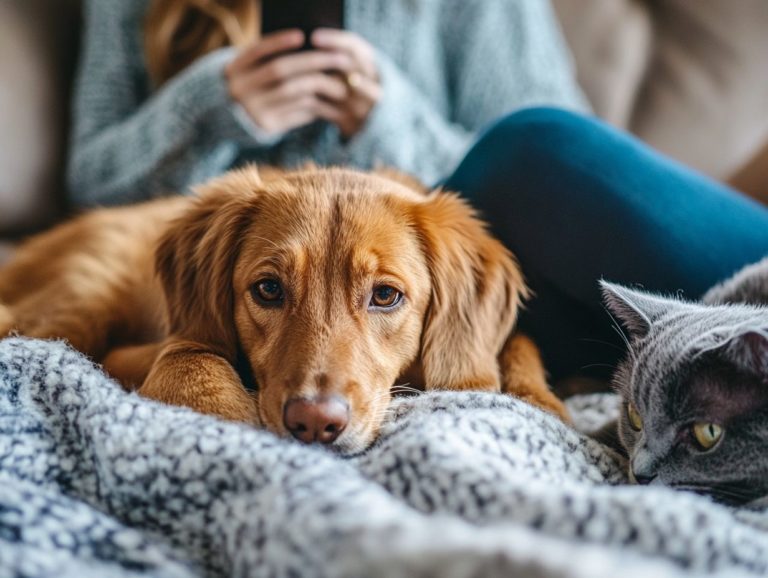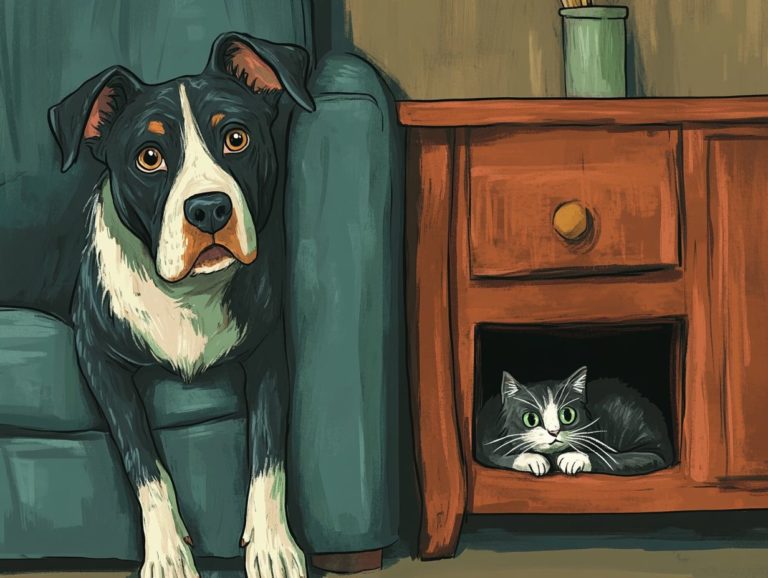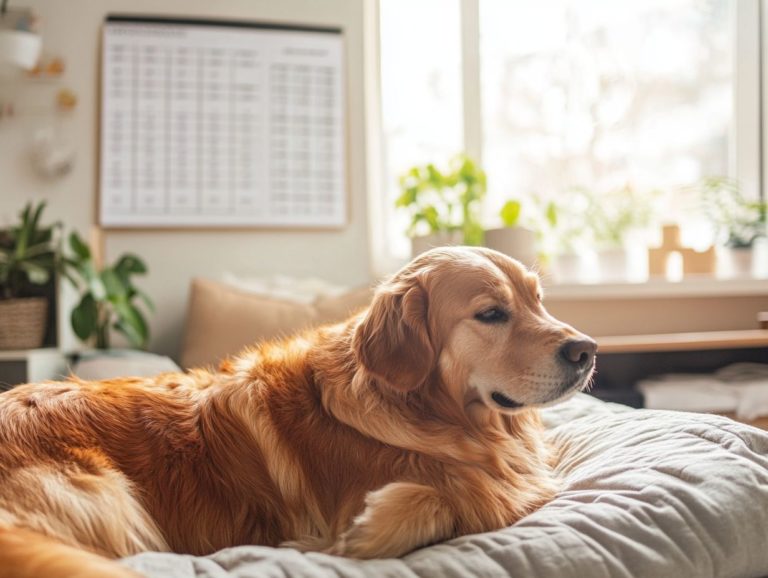How to Help Your Pet Adjust to a New Family Member
Welcoming a new family member is an exhilarating experience! Are you excited about bringing a new furry friend into your home? Let’s dive into how to make this transition smooth.
However, it can also present a significant adjustment for your furry companions. Whether it s a new baby, partner, or another pet, grasping how to prepare your existing pet is essential for ensuring a seamless transition.
This guide will lead you through the entire process from introducing the concept of a new family member to your pet to crafting a comfortable environment, and fostering harmonious relationships through key house training tips and proper introductions.
Get ready for fantastic tips that will help your pet not just adjust but thrive in your growing family!
Contents
- Key Takeaways:
- Preparing Your Pet for a New Family Member
- Introducing Your Pet to the New Family Member
- Helping Your Pet Adjust to the New Family Member
- Maintaining a Healthy and Harmonious Household
- Frequently Asked Questions
- What are some ways to help my pet adjust to a new family member, like a new baby or puppy?
- How can I prepare my pet for the arrival of a new family member?
- What should I do if my pet is acting out or showing signs of anxiety after the arrival of a new family member?
- Is it normal for my pet to feel jealous or territorial towards a new family member?
- Should I give my pet extra attention when a new family member comes home?
- How long does it typically take for a pet to adjust to a new family member?
Key Takeaways:
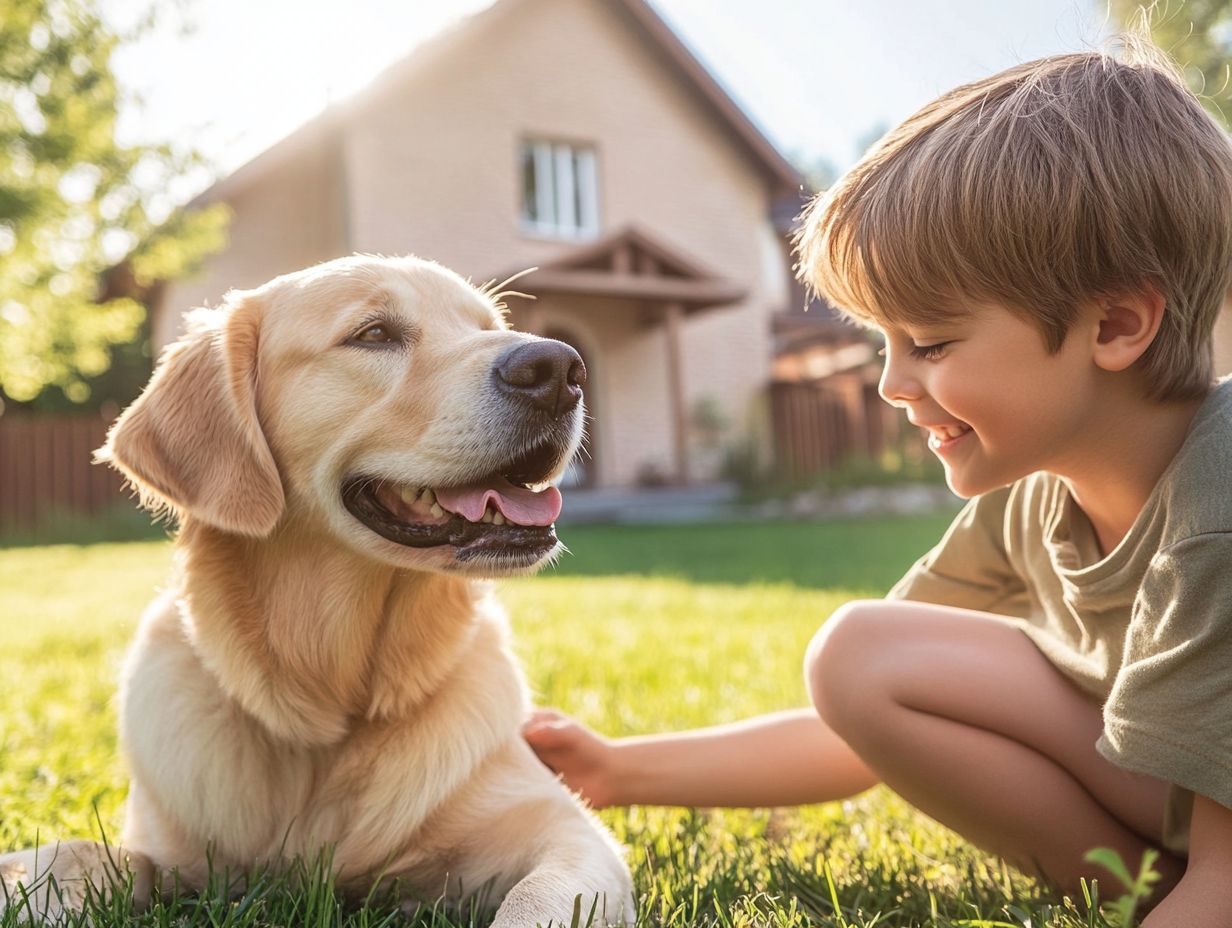
- Introduce the idea of a new family member gradually to your pet to avoid overwhelming them.
- Prepare your pet’s environment by creating a safe and comfortable space for them, ensuring you have all the necessary supplies like bedding, toys, and a cozy dog bed.
- Set boundaries and rules for interactions between your pet and the new family member to establish a harmonious household.
Preparing Your Pet for a New Family Member
Preparing your pet for a new family member is essential for a harmonious household. This journey starts with understanding family dynamics and proactive planning, along with exploring techniques to help pets adjust to new environments.
Introducing a canine companion can significantly alter your pet s routine and affect trust development. You must consider various factors, such as the size of the dog, its gender, and the time commitment necessary for a smooth adjustment.
By addressing these elements, you create a safe and welcoming environment for everyone involved.
Introducing the Idea of a New Family Member
Introducing a new family member, like a furry friend, calls for a thoughtful discussion about family dynamics. Engaging in open conversations creates a trusting atmosphere, allowing your existing pets to feel secure as they adjust to potential changes in their daily routines.
You can involve your children in preparing for the dog’s arrival by encouraging them to assist with selecting toys or participating in training sessions. This not only makes them feel important but also strengthens their bond with the new addition.
Establishing a consistent routine will help you balance attention between your current pets and the newcomer. This ensures that every member of your household feels valued.
The benefits of welcoming a new dog are numerous: companionship, teaching responsibility, and the joyous moments that can enrich family life and strengthen connections for everyone involved.
Preparing Your Pet’s Environment
Preparing your pet’s environment is essential for ensuring a smooth transition. Start by creating a safe haven equipped with all the necessary supplies, including cozy bedding and engaging toys.
Establishing a designated area for your new companion is vital. This space provides a sense of security in unfamiliar surroundings.
Choose a comfortable, washable dog bed placed in a quiet corner, away from heavy foot traffic. This allows your new dog a retreat when they feel overwhelmed.
Offering a variety of stimulating toys keeps their minds engaged and helps occupy their time. Setting clear boundaries for interactions with your existing pets is crucial for maintaining harmony. For example, using gates can effectively manage those initial introductions.
This level of thoughtful preparation can significantly ease anxiety for both your new pet and your current ones. It makes the entire experience not just seamless, but truly enjoyable.
Introducing Your Pet to the New Family Member
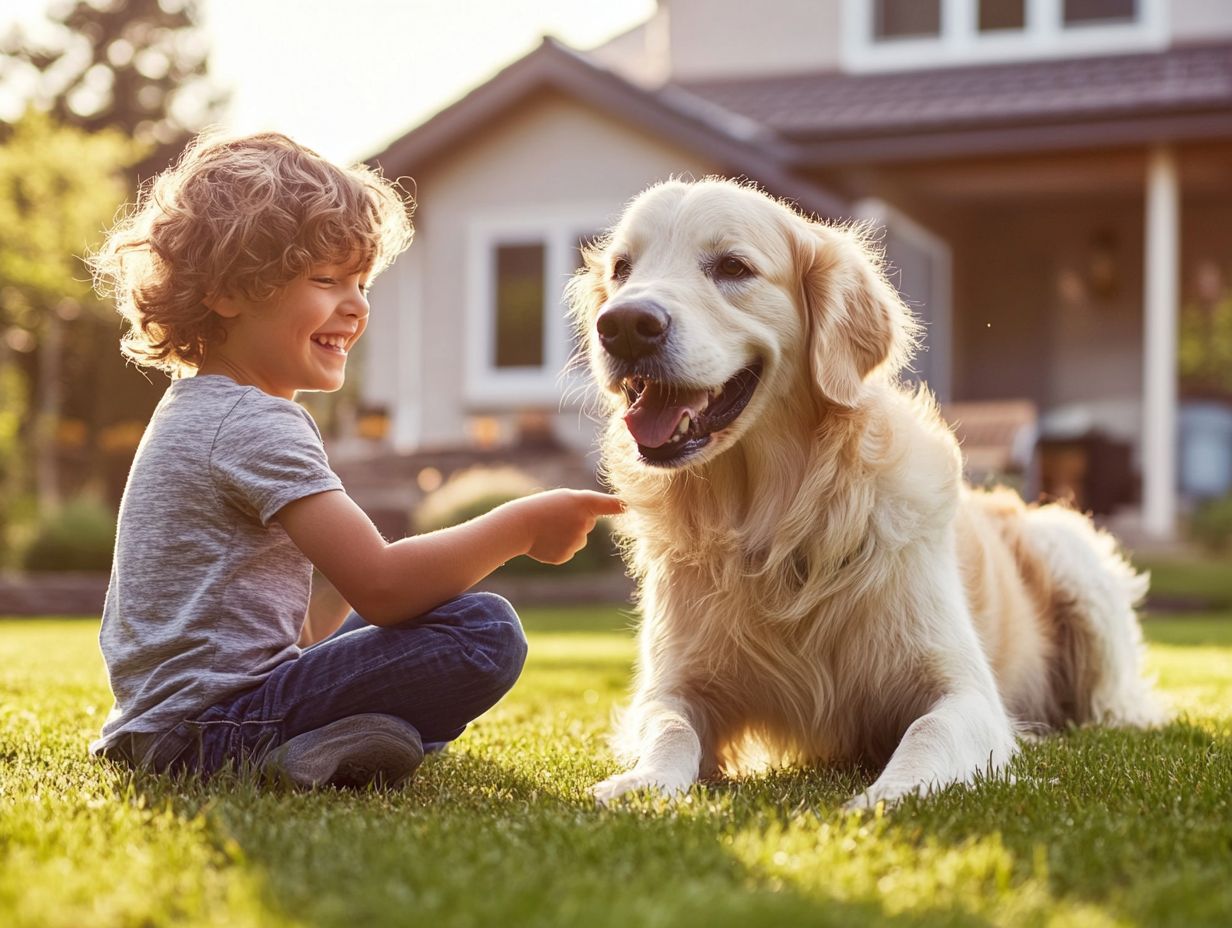
When you introduce your pet to a new family member, it’s vital to emphasize those initial encounters and interactions. These moments play a crucial role in building trust and encouraging positive behaviors.
By approaching the situation calmly, you create an environment conducive to a smooth transition and harmonious relationships.
Have questions about the process? Share your thoughts below, and let s help each other create a happy home!
First Encounters and Interactions
First encounters and interactions between your pet and the new family member are crucial moments that can either nurture trust or breed tension.
Choose a quiet, neutral space for introductions. This helps both pets feel safe and reduces anxiety. Supervised interactions act as a safety net, allowing both your pet and the new arrival to discover each other s presence without overwhelming distractions.
You can encourage positive behaviors during these encounters by using treats and praise, reinforcing calm and friendly interactions. Gentle introductions through gradual proximity can foster comfort, laying the groundwork for a harmonious relationship as time goes on.
Establishing Boundaries and Rules
Clear rules create a safe environment. This helps both pets to feel comfortable and understand expected behaviors.
By implementing effective ways to set boundaries, you can foster an atmosphere of mutual respect. For example, using consistent cues and commands helps all pets recognize their limits. When introducing new rules, it s super important to communicate them clearly, so both dogs grasp what behaviors are acceptable and which are not.
Reinforcing positive behaviors with treats and praise not only encourages good habits but also builds trust over time. Regularly practicing these boundaries, along with a healthy dose of patience and understanding, allows your pets to feel more comfortable, promoting harmony within your household.
Helping Your Pet Adjust to the New Family Member
Helping your pet adjust to a new family member is important. Focus on their comfort during this time, and consider exploring how to help an anxious pet adjust to new environments to ensure a smooth transition for everyone involved.
Addressing Behavioral Changes
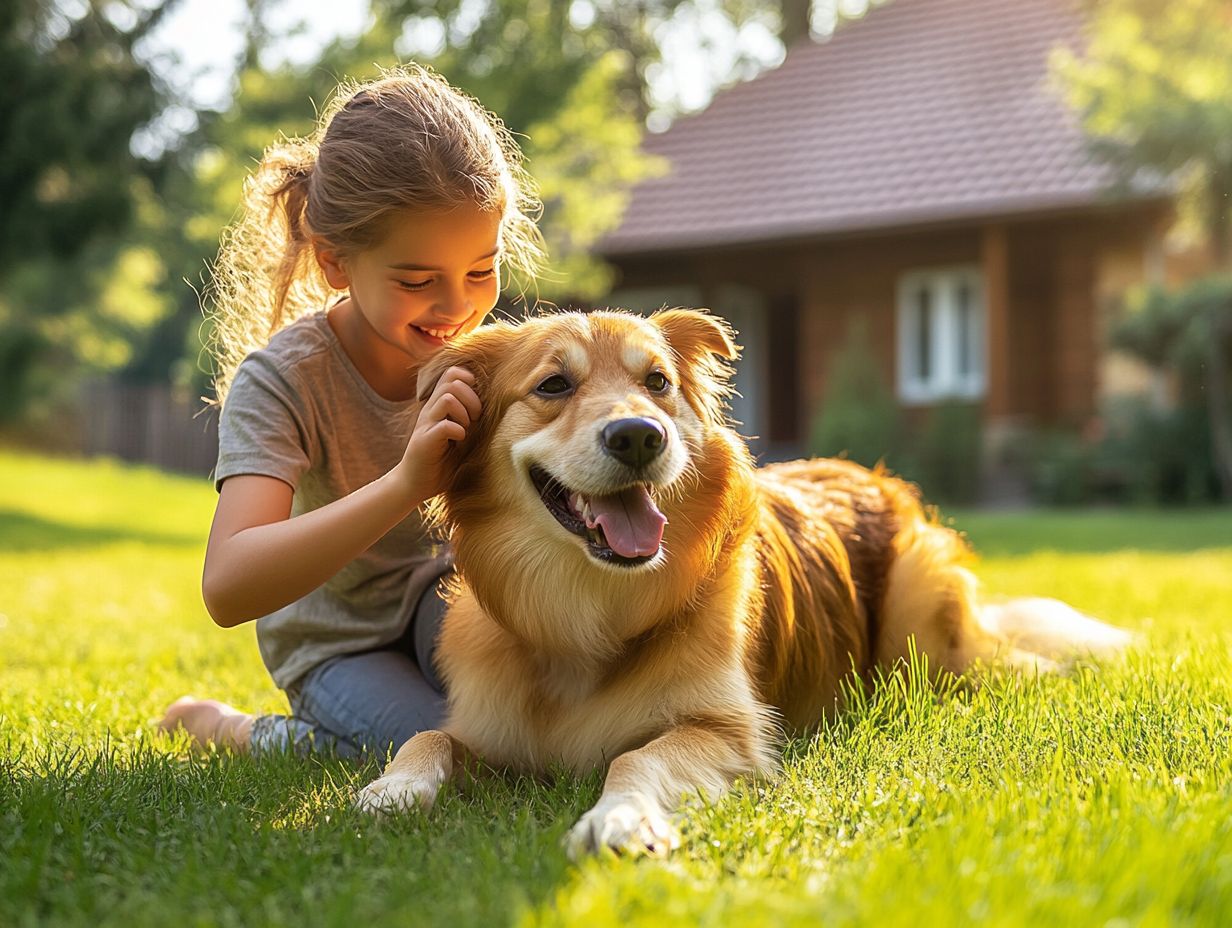
Addressing behavioral changes in your pet during this transition is crucial for nurturing positive behaviors, managing any aggression, and fostering trust between you and your furry companion.
Watch for signs of anxiety or aggression. If you see your pet is anxious, create a safe space for them to relax. Common issues may arise as pets adapt to new environments or routines. To manage these behaviors effectively, it s vital for you to observe the signs early on. For instance, creating a safe space or offering comfort items can significantly alleviate their stress. In cases of aggression, pinpointing things that make your pet upset can help you redirect that energy into constructive interactions.
Engaging your pet with toys or practicing commands not only diverts their focus but also strengthens your bond, making this transition smoother for both of you.
Ensuring Your Pet’s Comfort and Well-Being
Ensuring your pet s comfort and well-being during this transition is crucial. Keep your pet comfortable by sticking to a daily routine.
By establishing consistent feeding times, regular walks, and play sessions, your pet will experience a sense of normalcy that significantly reduces anxiety. Incorporating familiar items like their favorite toys, bedding, and even their usual eating spot can create a reassuring atmosphere they will appreciate.
Sticking to previous training commands during interactions reinforces that sense of familiarity. It s also beneficial for you to weave their favorite routines into your daily life, encouraging them to engage with their surroundings.
The harmony you cultivate through these practices will help your pet adapt more smoothly, ultimately fostering a comfortable and secure space in their new setting.
Maintaining a Healthy and Harmonious Household
Maintaining a healthy and harmonious household with your new family member demands a thoughtful approach. It involves nurturing a positive relationship, understanding the intricate dynamics at play, and dedicating time to establish a consistent routine that fosters connection and stability.
By following these tips, you can create a happy home for your pets and new family member.
Tips for Maintaining a Positive Relationship
To cultivate a positive relationship within your family, it s vital to prioritize family dynamics. Dedicate quality time and establish consistent routines that embrace every pet.
Engaging all family members in activities such as regular playtime and training sessions can significantly strengthen the bonds you share. Think about scheduling weekly outings to local parks or scenic nature trails, allowing your pets to explore and bask in the fresh air alongside their owners.
Incorporating pet-friendly games during these excursions adds an element of excitement and fosters teamwork among family members.
Setting aside dedicated time for training improves your pets behavior and enriches the quality time you spend together, solidifying trust and communication.
Make sure every pet feels included. This leads to a happier family dynamic!
Frequently Asked Questions
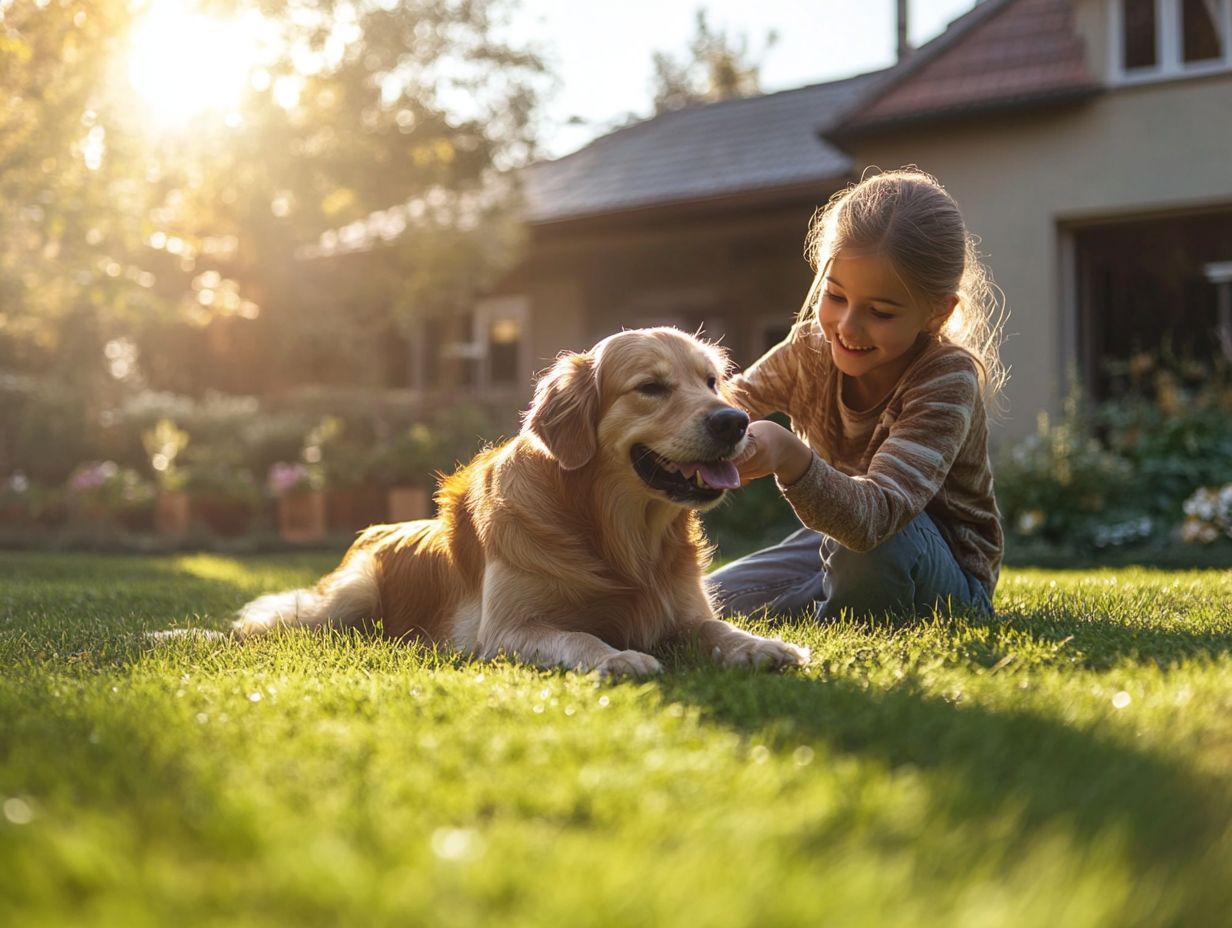
What are some ways to help my pet adjust to a new family member, like a new baby or puppy?
One way to help your pet adjust is to gradually introduce them to the new family member, allowing them to get used to their scent and presence. For more tips on this process, check out our guide on how to transition pets to new environments. It’s also important to give your pet plenty of love and attention during this transition period.
How can I prepare my pet for the arrival of a new family member?
You can prepare your pet by setting up a designated space for them in the household, ensuring they have their own toys and bedding. It’s also helpful to establish a routine that includes quality time with your pet, even after the new family member arrives.
What should I do if my pet is acting out or showing signs of anxiety after the arrival of a new family member?
If your pet is displaying behavioral changes or signs of anxiety, it’s important to remain calm and patient. Keep a consistent routine and give your pet plenty of reassurance and attention. You may also consider seeking advice from a professional trainer or behaviorist.
Is it normal for my pet to feel jealous or territorial towards a new family member?
Yes, it’s common for pets to feel jealous or territorial when a new family member is introduced. This is their way of expressing their love and protectiveness towards their home and family. With time and patience, they will come to accept and love the new addition.
Should I give my pet extra attention when a new family member comes home?
Yes, it’s important to give your pet extra attention and love during this transition period. This will help them feel secure and reassured that they are still an important part of the family. However, be sure to also give the new family member attention and gradually involve your pet in their care and activities.
How long does it typically take for a pet to adjust to a new family member?
Every pet is different, so the adjustment period may vary. It may take a few weeks or even months for your pet to fully adjust to a new family member. Be patient and understanding, and with proper introduction and attention, your pet will eventually become comfortable with the new family member.
If you have more questions, feel free to reach out or explore our resources!

